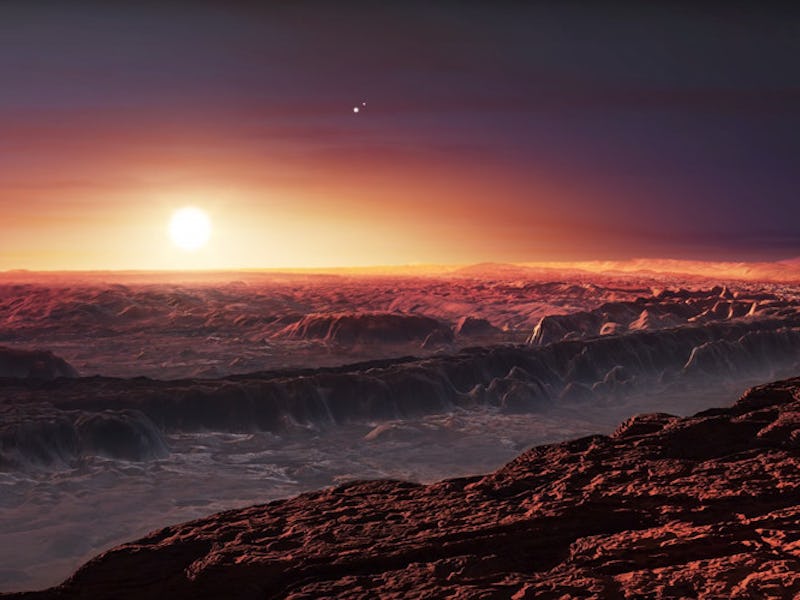Move over Tatooine — having two suns is old news. New research shows that the closest exoplanet to Earth — Proxima b — may have just one-upped the fictional Star Wars desert world by possessing not two, but three stars as a part of its orbit.
Most of the stars in the universe come in pairs, orbiting around the same point in space. This is known as a binary star system — planets that reside in such a system end up orbiting both stars. In order for that to happen, both stars must be gravitationally bound, orbiting the same central point in space. However, astronomers have had a difficult time proving this is the case with the Alpha Centauri system — the nearest star system to Earth (at 4.3 light-years away), and another place hyped with the prospect of habitable worlds and alien life. Close to Alpha Centauri’s two stars is Proxima Centauri — a faint red dwarf around which Proxima b orbits. And for a while, scientists weren’t completely sure if Proxima Centauri shared an orbital relationship with Alpha Centauri.
Because Proxima Centauri is so faint, astronomers have had a difficult time accurately measuring its radial velocity — aka the speed at which it moves towards and away from Earth.
Recently, a trio of astronomers concluded that the three stars are indeed orbiting the same point, by using a specialized instrument at the European Southern Observatory (called HARPS). Their research will be published in the journal Astronomy & Astrophysics, and a pre-print is currently available online.
Orbital plot of Proxima Centauri showing its position with respect to Alpha Centauri over the coming millenia.
The new data doesn’t simply reveal that this a bound triple star system. The observations also place the age of the stars in the system at approximately six billion years old and indicate that Proxima b may have formed farther away from Proxima Centauri. As the planet orbited, Alpha Centauri A and/or B could have tugged on it a bit and altered its orbit, pulling it closer in. Or, perhaps Proxima b could have formed around one of the other stars and was captured by Proxima Centauri as it passed by.
The new findings bolster the possibility that we could one day find life on this alien world. If either of these hypotheses is correct, then it’s entirely possible that Proxima b was once an icy world that now has liquid water on its surface thanks to some cosmic reshuffling. Water’s the single most important property for allowing a world to sustain life. The potential for Proxima b to one day be home to future humans — or perhaps currently be home to extraterrestrial life — is now dramatically more exiting.
If that wasn’t cool enough, it also means that any potential life on the planet would get to experience an epic three star sunset every day.
